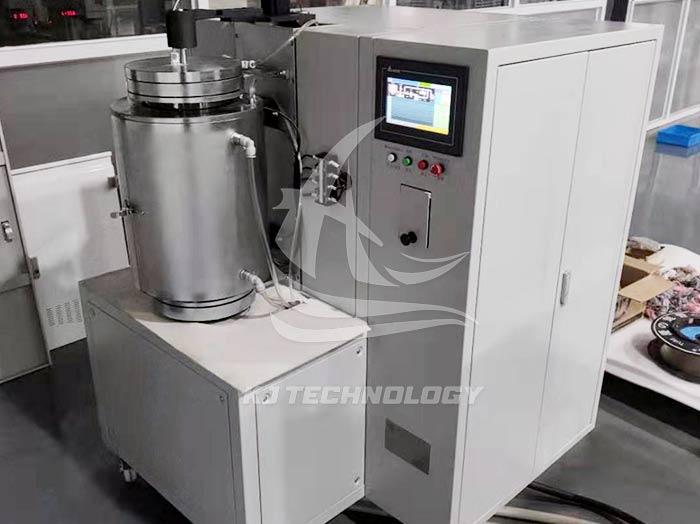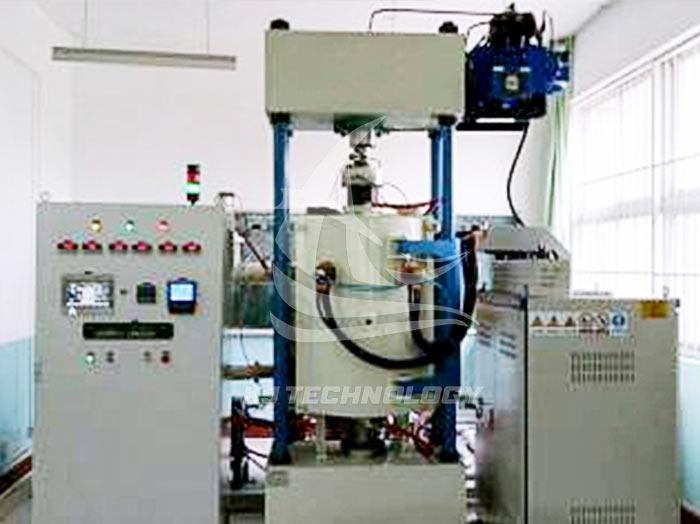Metal heat treatment furnace
 08-12-2025 Author: KJ technology
08-12-2025 Author: KJ technology
Metal heat treatment furnace is a specialized equipment used for heating, insulation, and cooling metal materials to change their internal structure and obtain desired properties. It is widely used in mechanical manufacturing, automotive, aerospace, tool manufacturing, and other fields.
1. Core functions and roles
Metal heat treatment furnaces achieve the following goals through precise control of heating temperature, holding time, and cooling rate:
Improving mechanical properties: enhancing the hardness, strength, elasticity, toughness, and wear resistance of metals. For example, after quenching and tempering treatment, the service life of automotive gears is significantly extended.
Eliminate internal stress: Reduce residual stress generated by pressure processing (such as forging and casting) to prevent workpiece deformation or cracking.
Optimize cutting performance: reduce metal hardness, improve machinability, and reduce tool wear.
Enhance corrosion resistance: By surface chemical heat treatment (such as carburizing and nitriding), a dense oxide layer is formed to extend the service life.
2. Main types and classifications
According to differences in process, heating method, and structure, metal heat treatment furnaces can be divided into the following types:
a. Classified by process
Annealing furnace: eliminates internal stress, improves processing performance, suitable for box type furnaces and well type furnaces.
Quenching furnace: rapid heating followed by rapid cooling to increase hardness, such as salt bath furnace, high-frequency induction furnace.
Tempering furnace: Reduce quenching brittleness, stabilize structure, mainly low-temperature tempering furnace.
Carburizing/nitriding furnace: surface chemical heat treatment, such as gas carburizing furnace, ion nitriding furnace.
b. Classified by heating method
Resistance furnace: heated by electric heating elements (such as heating wires and silicon carbide rods), commonly used in box type furnaces and well type furnaces, with precise temperature control.
Vacuum furnace: heated in an oxygen free environment to prevent oxidation, used for high-precision parts (such as titanium alloy solution treatment).
c. Classified by structure
Box furnace: Strong universality, suitable for batch processing of small and medium-sized parts.
Well furnace: used for vertical heating of long axis parts, with uniform heat transfer and reduced deformation.
Continuous furnace: assembly line operation, suitable for large-scale production, such as mesh belt furnace and push rod furnace.
3. Core components and technical parameters
Main structure
Furnace body: Insulated with refractory materials such as ceramic fibers and refractory bricks to reduce heat loss.
Heating system: Electric heating wire, silicon carbide rod or gas burner provide heat source.
Temperature control system: thermocouple+temperature controller, with an accuracy of ± 1 ℃, ensuring process stability.
Atmosphere control system: Introduce protective gases (such as nitrogen, methanol cracking gas) to prevent oxidation or decarbonization.
key parameter
Temperature range: 300 ℃~1300 ℃ (depending on process requirements), high temperature furnace (>1000 ℃) is used for quenching, and low temperature furnace (<650 ℃) is used for tempering.
Furnace size: Designed based on the size of the workpiece, it is necessary to consider the loading capacity and temperature uniformity.
Uniformity: The furnace temperature uniformity should meet ± 5-10 ℃ (stricter aviation standards) to avoid performance differences caused by local overheating.
4. Typical application scenarios
Mechanical manufacturing: quenching and tempering of gears and bearings to improve wear resistance and service life.
Automotive industry: carburizing treatment of engine parts (such as crankshafts and camshafts) to enhance surface hardness.
Tool mold: Vacuum quenching of high-speed steel cutting tools to reduce deformation and maintain sharpness.
Aerospace: Solid solution treatment of titanium alloys requires ultra-high precision temperature control (± 1 ℃) to ensure performance stability.
5. Key selection points
Process matching: Select furnace type based on materials (steel, aluminum, titanium) and processes (quenching, tempering, carburizing).
Capacity demand: Prioritize continuous furnaces (such as mesh belt furnaces) for mass production, and use box furnaces for small batches.
Energy saving: Resistance furnaces have precise temperature control but high energy consumption, while gas furnaces have low operating costs but environmental requirements need to be considered.
Automation: Modern furnaces can be integrated with PLC control to achieve unmanned operation and improve production efficiency.
6. Maintenance and safety
regular maintenance
Clean up the carbon deposits inside the furnace and check the aging condition of the electric heating elements.
Replace the vacuum pump oil, calibrate the thermocouple and temperature controller.
safety protection
Set up over temperature alarm and emergency cooling system to prevent equipment damage or fire.
Operators need to wear protective clothing, gloves, glasses, etc. to avoid high temperature burns or gas poisoning.
Energy consumption optimization
Adopting waste heat recovery technology to reduce operating costs.
Optimize furnace structure to reduce heat loss.








